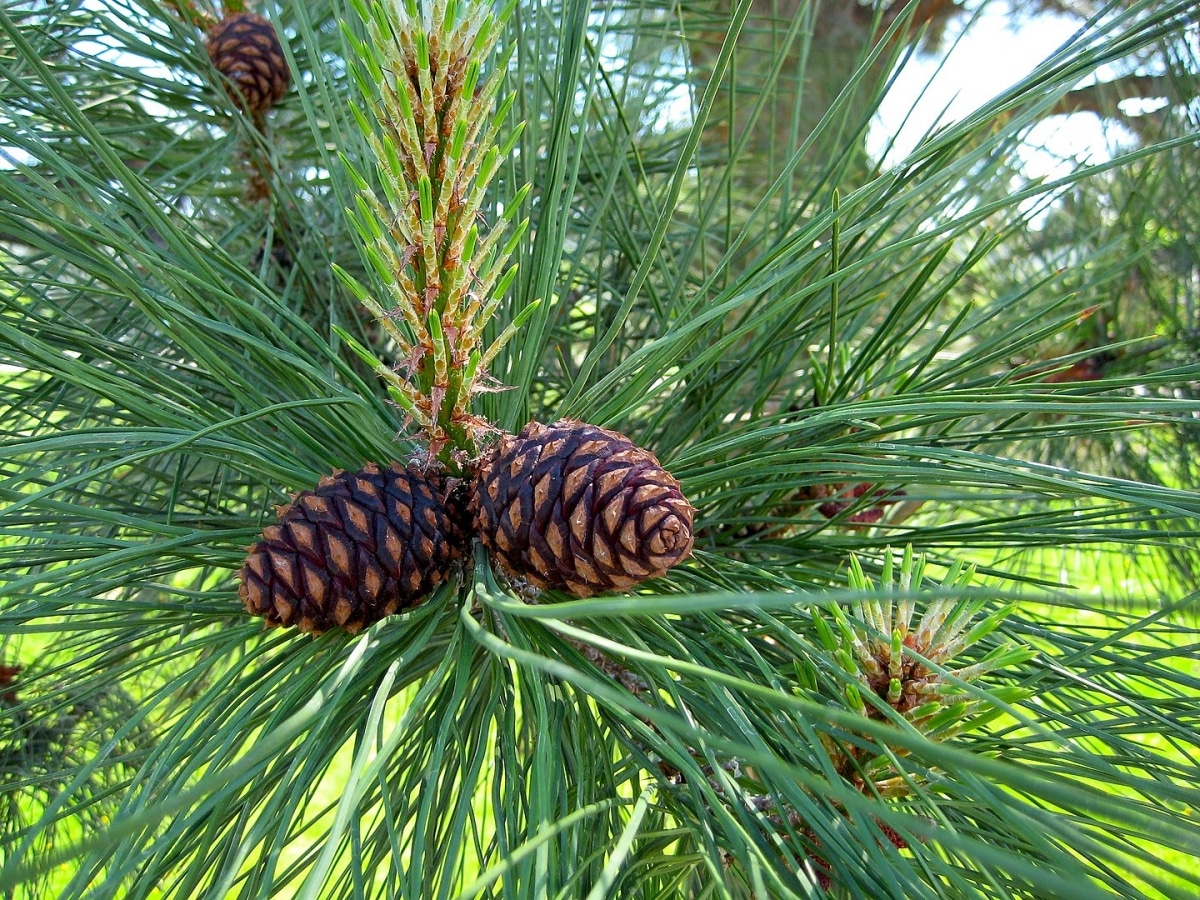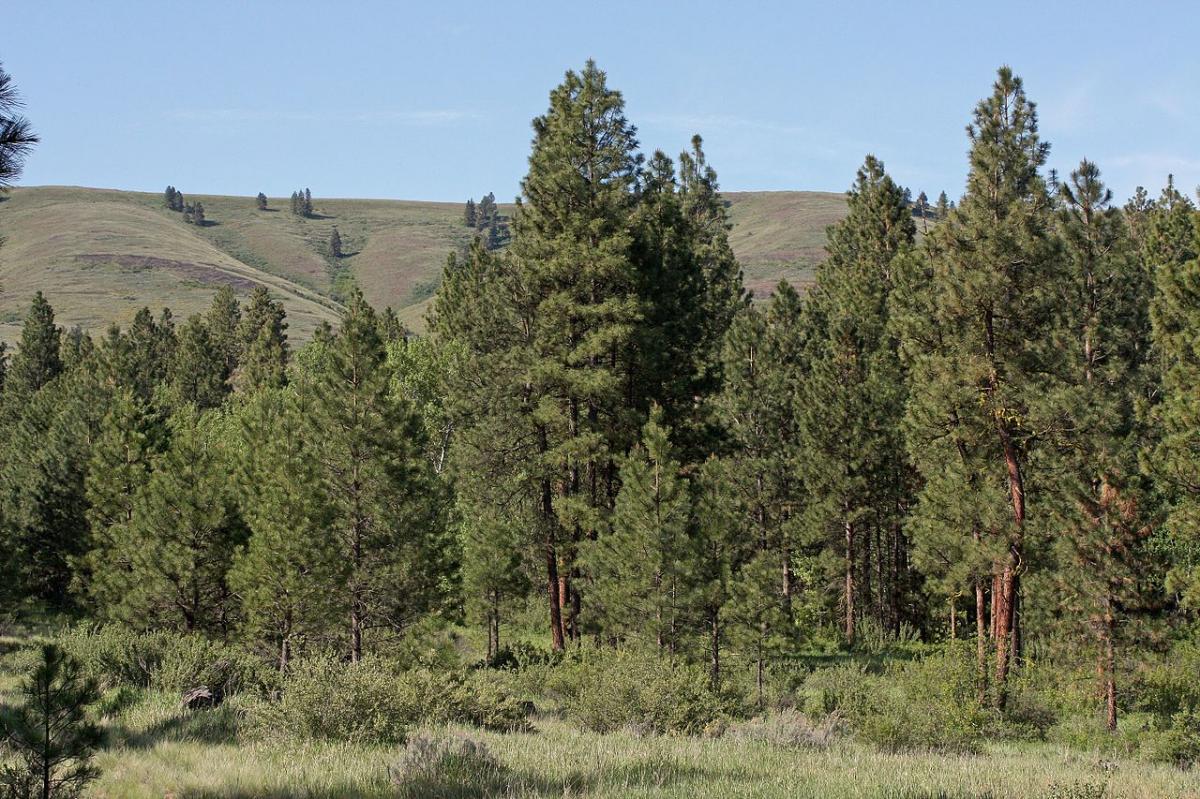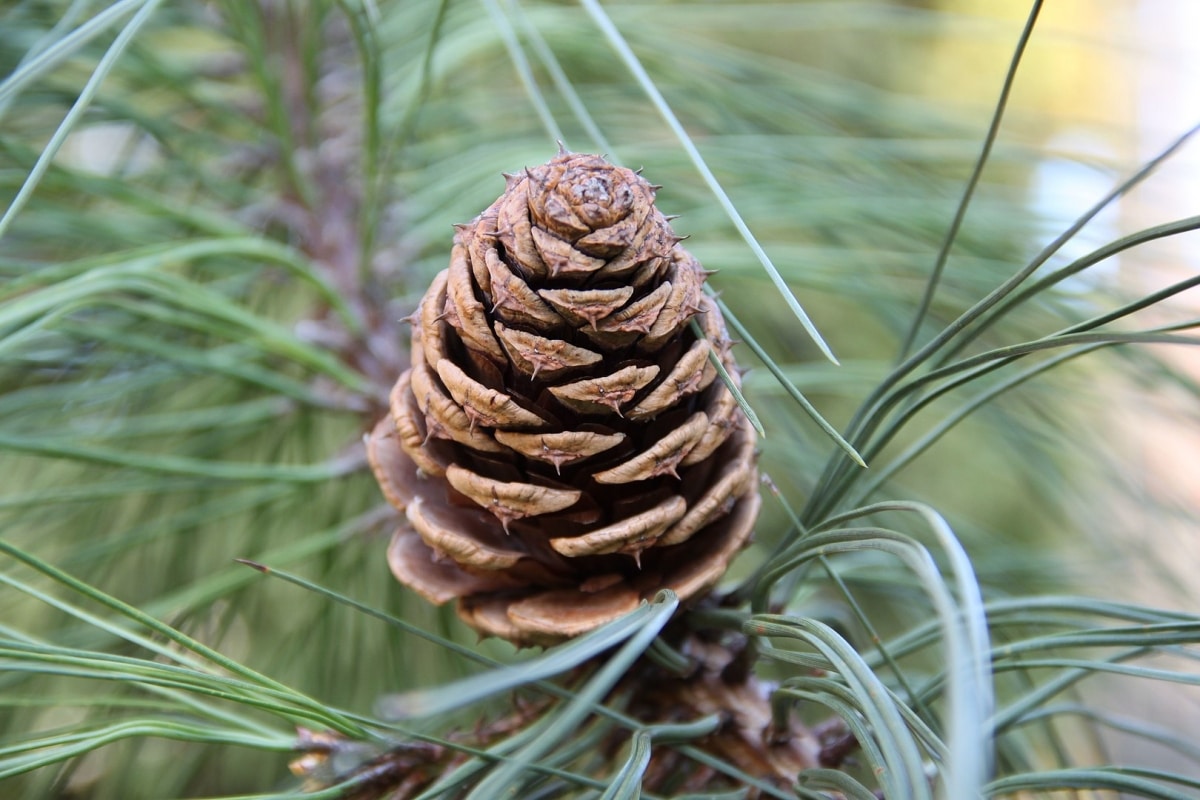
Image - Wikimedia / Gerry
El Pinus ponderosa it is an imposing conifer. Without a doubt, its trunk is not as thick as that of the redwoods, but even so, you have to leave a lot of space in the garden so that it can grow in conditions. In addition, it also grows in America; in fact, they share habitat with the tallest tree in the world at certain points in the western United States.
Without a doubt, it is a perfect plant to grow in large gardens, although there are also those who work it as bonsai. Here we explain everything about him.
Origin and characteristics of Pinus ponderosa

Image - Wikimedia / Walter Siegmund
Our protagonist is a type of pine that grows towards the western United States. It is a very appreciated tree, especially by the state of Montana since it is its emblem. The species Pinus ponderosa, was first described in 1826, in eastern Washington. Like many other varieties, he grows up in the mountainous regions, including the Rocky Mountains, Sierra Nevada (from California) and the Cascade Range.
In addition, it is the dominant tree in many forests in the region, not only because of the number of specimens, but also because of the height it reaches. According to him american forest record, some have been found that measure up to 71 meters (235 feet) tall.
It is popularly known as ponderoso pine, ponderosa pine or royal pine, American royal pine or yellow pine, and develops a straight trunk up to 2 meters in diameter that branches several meters from the ground. Its bark is orange or brownish, and it has branches up to 2 centimeters thick. Needle leaves sprout from them in groups of three, and are 12 to 28 centimeters long.
Blooms in spring. The cones can be male or female. The former are orange or yellowish, small and sprout at the end of the branches; on the other hand, the others measure between 8 to 15 centimeters. The maturation of the cones occurs towards the summer of the second year, and when it occurs they release the seeds.
Varieties
Four subspecies of Pinus ponderosa have been identified, which are:
- Pinus ponderosa subsp. ponderosa: prefers cool climates, with warm and humid summers and very cold winters.
- Pinus ponderosa subsp scopulorum: grows in areas with mild and relatively dry summers, and winters with snowfall.
- Pinus ponderosa subsp brachyptera: lives in areas where summers are hot and humid, and winters are mild.
- Pinus ponderosa subsp benthamiana: found in places where summers are hot and dry and winters are mild and humid.
What uses is it given?
Ponderosa pine has two different uses:
- Ornamental: it is the most widespread use in the Old Continent. It is planted in gardens, as an isolated specimen, or in rows. In addition, it provides shade and keeps the privacy of the garden protected. It can also be worked as a bonsai.
- Wood: In the United States it is widely traded for its wood. It serves both for construction, as to make furniture, panels, boxes, etc.
How do you take care of Pinus ponderosa?

Image - Wikimedia / Baummapper
If you would like to have a specimen in your garden, you have to take into account some things that we will explain below:
Location
It is a tree that can become very large, so Not only do you have to keep it outside, but it is also important that it be planted in the ground as soon as possible (Unless it is going to work as bonsai, of course).
Find a place where it is far, at least ten meters away, from pipes, paved floors, etc., and where it can receive the sun for at least five hours a day.
Earth
- Garden: grows in cool, light, and deep soils. It needs the soil to be fertile so that its roots get the nutrients they need to live.
- Pots: while it is young, or if it is going to be pruned, it can be kept in pots with holes in its base. Fill them with universal substrate (on sale here) or mulch mixed with a little perlite.
Irrigation
You have to water in moderation, about three times a week. During the winter, or if we live in an area where it rains frequently, the waterings will be more spaced, since otherwise we would lose our Pinus ponderosa due to excess water.
We will use rainwater, or if we cannot get it, soft water. Likewise, when watering we have to avoid wetting the plant, especially if it is in the sun at that time. since otherwise it would burn.
Subscriber

Image - Wikimedia / Crusier
It is important to fertilize royal pine while it is in its growing season, which is from early spring to after summer. To do this, we can use manure or worm castings, for example, once a week.
Transplant
It will be done at early spring, before it resumes its growth. In this way, you will be able to root without problems.
Rusticity
It is a tree that resists frost without problems. It can withstand up to -20ºC without suffering any damage.
Did you know the Pinus ponderosa?